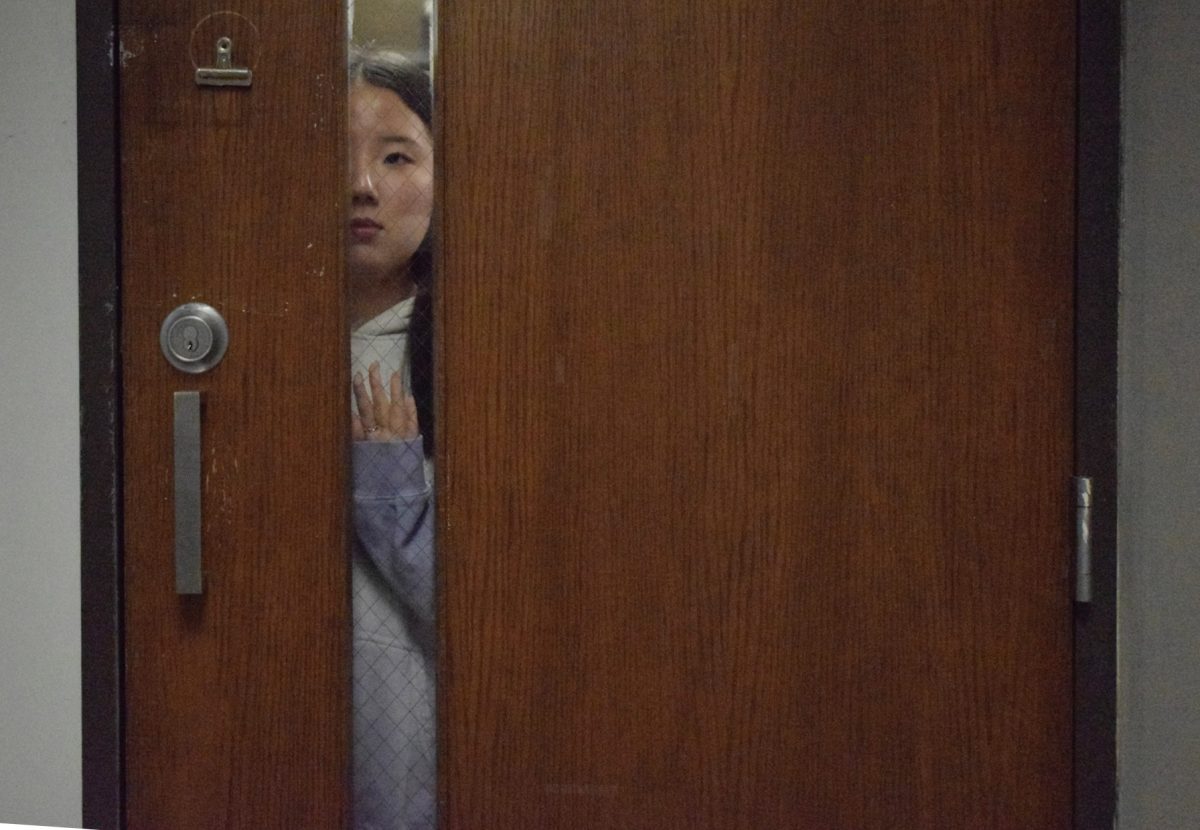On the second Sunday in May of every year, families gather to celebrate the strong women who brought children into the world and tended to the development of the next generation. This year on May 12, Mother’s Day rang in for a day designated solely towards gratuity to the women of our households. Whether it was buying flowers, making brunches, or simply spending quality time together, children around the nation invested in returning the favors that their mothers provide every day.
“There’s a joy that comes with being a mom, but it’s also about balance. Having children changes your life because you’re doing things for you, but those [things] get pushed to the side so that you can do things for [your children]. But, you can’t just do things for other people instead of yourself, because then you don’t have any more of yourself to give,” choir teacher Karey Fitzpatrick said. “Mother’s Day is a great moment to reciprocate all those sacrifices.”
On the third Sunday in June of every year, the festivities ring again — this time, celebrating the national holiday of Father’s Day. But while the concept of the holiday revolves around the same ideology of honoring parenthood that Mother’s Day does, the celebrations always seem to dull down in scope by the time that day comes around.
“In my personal experience, Mother’s Day is celebrated more — but I don’t think it’s still celebrated enough. Mothers should get a whole week for everything that they do. Father’s Day is more laid-back and not as significant,” English teacher Casey Holland said.
Children themselves tend to favor maternal celebration as well. In a West survey of 87 students, 52% said they celebrated and/or spent more money on Mother’s Day while a mere 3% voted the opposite, saying they celebrated and/or spent more money on Father’s Day.
“[Most people] definitely praise Mother’s Day more than Father’s Day,” junior Addison Merz said. “There is a lot more pressure. A mother is typically in a child’s life more, so we praise them more.”
This disparity is common nationwide as well, as consumer spending on Mother’s Day in 2019 reached an estimated $25 billion nationwide, while Father’s Day spending only reached $16 billion. This spending gap reflects the extent to which both holidays are celebrated; though the gap may seem understandable or even suitable as retribution for the increased workload of a mother, history’s implications provide less positive reasoning for this distinction.
While it may seem as though Mother’s Day was created to celebrate the remarkable achievements of maternal figures, the truth of the basis actually lies in the context of the timing of the ratification of the 19th Amendment. Granting women the right to vote in the United States, the amendment finally ended the long battle for women’s suffrage.
But over a decade before this bill was passed, Mother’s Day was introduced as a national holiday in 1908 — meaning women were praised for motherhood long before they held basic citizenship rights. Shortly after its introduction, President Woodrow Wilson declared Mother’s Day a national holiday. And while Father’s Day was also first celebrated around the same time, it was only declared a national holiday about 60 years later.
So what was the reason for over half a century to pass before Father’s Day witnessed the same acknowledgment as Mother’s Day?
The answer lies in the intention of the establishment of Mother’s Day. At the turn of the 20th century, the prevalent classification of women as domestic caretakers was heavily promoted by society. During World War I particularly, as fatherhood became less socially prioritized in favor of gaining male military workers, Mother’s Day served as a way to push the domestic roles of women that were standard and necessary in society at the time as an effort to keep internal households sustained amidst international disputes. Only after the success of women’s suffrage movements — and the end of the global wars — did Father’s Day become recognized, displaying the role that patriarchal restriction played in the making of these holidays.
Initially, some men did not even want a Father’s Day, viewing it as a waste of money due to the commonality of men being the sole breadwinners of households, while another movement simultaneously pushed for a combined “Parents’ Day.” Father’s Day became much less supported due to these controversies, causing its delayed recognition.
Only after the Great Depression did Father’s Day gain a strong amount of momentum. As struggling businesses began to recognize this conceptual holiday as an opportunity to gain more money, they supported the prospect heavily. With this context, rather than the benevolence Father’s Day is meant to praise, we are essentially left celebrating a covert event solely initiated to guise another money grab.
In comparison, the establishment of Mother’s Day became a falsely applauded tactic of enforcing the domestic roles that limited women, rather than pushing past those boundaries; meanwhile, the initiation of Father’s Day rose to success for the money that came with it. The sad truth behind these two holidays is what alters the contemporary thought of parental celebration into just another way of perpetuating outdated viewpoints.
At its core, this history causes us to question if celebrating Mother’s Day to applaud all that our mothers do for us is its core purpose. Are we attempting to reverse a prior lack of appreciation for women in the past, or are we enforcing the ideology that deems women as more prominent caretakers, covertly portraying the gender restrictions we’ve worked so hard to dismantle in the modern age?
Both options can be true at the same time, even though most of us fail to see it. The disparity between celebrating Father’s Day and Mother’s Day celebrations unintentionally sends a message that women are meant to have a more prominent role in childcare. A closer look at one of the biggest parts of the modern day can provide more clarity: shopping. Each Mother’s and Father’s Day, stores pull out all the stops to entice and even guilt-trip children into the obligation of buying gifts for their parents. With marketing slogans claiming the necessity of purchasing gifts to prove the gratitude that kids wish to show their parents, the holiday now revolves around extravagance more than anything. But the differences in commercial marketing for the two holidays are evident to the general public, including students buying gifts for their parents.
“Marketing-wise, it depends on the store. If it is a clothing store, they’ll push toward women. If it’s anything outdoors related, it’s all [pushed toward] men,” Merz said.
In fact, the irony of the establishment of Mother’s Day is the history of the creator of the holiday, social activist Anna Jarvis, who later denounced and attempted to put an end to the growing commercialization of Mother’s Day. As Jarvis feared, the holiday had turned from a grateful appreciation of motherhood across the nation to a chance for stores to fill their pockets by pushing the marketing of selling flowers and gifts. And that growing consumerism caused distinct stereotypes to take control of the marketing that we are so used to on these holidays, losing the real concept of what Mother’s Day and Father’s Day celebrations are about and feeding into gender roles of the past that outdated the modern reform movement.
“There [are] different companies that will market one way toward mothers versus one way towards fathers,” Fitzpatrick said. “Companies are just trying to make money however they can.”
Due to its placement earlier in the year, Mother’s Day gets a head start; combined with the increased expenses of ‘typical’ Mother’s Day gifts, the statistical disparity in national spending for mothers and fathers is extremely high at about $10 billion. Deals and coupons are vastly available before Mother’s Day in comparison to Father’s Day as well. In terms of shopping, as stores push forward Mother’s Day through excessive marketing, the effects show the numbers by which Mother’s Day is being celebrated more.
This commercial push might just be another method to enforce past gender roles and redirect the mindset to the idea that since mothers do more in the household, they deserve more. In a world where women and men work to share the same status and roles in the global system, it matters when we say mothers do more in the house because it reinforces the mindset that every household is the same, where the mother is meant to be in charge of childcare. The line of celebration becomes a fine one after the influence of commercialization comes in. With this tone-deaf mentality, companies also avoid the conversation and contribution of a family that doesn’t look the same across all houses.
But this does not mean that we should immediately give up our annual celebrations for mothers across the country on their excellence in providing for their children. From years of fighting for rights, while playing leading roles in domestic care to the biological role women play in providing children for the world, mothers deserve all of the appreciation that comes with Mother’s Day. However, we can perceive it from a different angle. Father’s Day and Mother’s Day should focus on working to ensure the equality of parental contribution to the growing generations. This begins with avoiding the marketing tactics that entice families to buy glitter and gold for Mother’s Day while keeping gifts simple for fathers and ends with the families themselves acknowledging the importance of both parental figure roles for a sustainable and enjoyable childhood for their children.
“We should still celebrate Father’s Day as much as we do Mother’s Day,” Merz said. “They both do so much for us kids in our lives, and they should get the same treatment if they want the same treatment.”
Taking a day to spend time with parents and family, rather than just spending money on gifts and falling into the easy trap of ‘celebrating’ Mother’s Day over Father’s Day, is one way that the children of the modern age can show gratitude. And at the same time, they’re able to push away the boundaries of history’s implemented gender roles that suggest mothers to be more involved in home life than fathers. Even when buying gifts, it is important to acknowledge the shared importance of both parents out loud, especially when kids are hesitant to say it enough.
“My family feels like they want or need to give me things, and that’s not what it’s about for me. It’s best to spend time with your kids. Finding a way to acknowledge, recognize and show that love, celebrating [from] year to year, makes it a special day,” Fitzpatrick said.
So, while Mother’s Day and Father’s Day are both times of celebration and happiness among families, we have to keep in mind the goals of the modern day. Under the circumstances, the value that both parents bring to the home should not be discounted. The basis of these holidays should never be forgotten amidst the shiny allure of gift-giving on holidays. To parents, holidays like these are meaningful beyond comparison, simply because they receive the recognition of being appreciated.
“It’s nice that we just take a day on the calendar to be accountable. We appreciate mothers and fathers every day, [but] this is their day on the calendar,” Holland said.
No matter what families do for Mother’s Day and Father’s Day, the key is putting the parents first. Taking the time to show gratitude is all that children can do, and it is all that parents can want. In reality, the money and gifts can only do so much if companies continue to distinguish both holidays so severely; until company marketing equalizes the importance of both holidays, the most impactful step is for children to make a point to recognize the equality themselves.
“It’s good for the kids to take a step back and realize how much parents do for [them],” Fitzpatrick said. “If they recognize it one day, maybe they’ll recognize it a couple more days in the year too.”

![Company marketing for gifts and cards during Mother’s Day and Father’s Day depicts the differences associated with the holidays. In order to capitalize on profit, large companies often include stereotype-reinforcing marketing behind parental celebration products: Mother’s Day sales typically prioritize jewelry and clothing, complete with heartfelt messages about childcare, while Father’s Day gifts tend to illustrate the father in a less serious, paternal light. “In terms of emails around those holidays, I typically get more Mother's Day [marketing] from florists or from whatever places I've shopped at online. I tend to see more in terms of advertising and marketing,” English teacher Casey Holland said.](https://pwestpathfinder.com/wp-content/uploads/2024/05/Untitled-design-11.png)

![Sophomore Maryem Hidic signs up for an academic lab through Infinite Campus, a grading and scheduling software. Some students enjoyed selecting their responsive schedule in a method that was used school-wide last year. “I think it's more inconvenient now, because I can't change [my classes] the day of, if I have a big test coming and I forget about it, I can't change [my class],” sophomore Alisha Singh said.](https://pwestpathfinder.com/wp-content/uploads/2025/10/DSC_0012-1200x801.jpg)
![Senior Dhiya Prasanna examines a bottle of Tylenol. Prasanna has observed data in science labs and in real life. “[I] advise the public not to just look or search for information that supports your argument, but search for information that doesn't support it,” Prasanna said.](https://pwestpathfinder.com/wp-content/uploads/2025/10/DSC_0073-2-1200x800.jpg)
![Junior Fiona Dye lifts weights in Strength and Conditioning. Now that the Trump administration has instituted policies such as AI deregulation, tariffs and university funding freezes, women may have to work twice as hard to get half as far. "[Trump] wants America to be more divided; he wants to inspire hatred in people,” feminist club member and junior Clara Lazarini said.](https://pwestpathfinder.com/wp-content/uploads/2025/05/Flag.png)
![As the Trump administration cracks down on immigration, it scapegoats many immigrants for the United States’ plights, precipitating a possible genocide. Sophomore Annabella Whiteley moved from the United Kingdom when she was eight. “It’s pretty scary because I’m on a visa. When my visa expires next year, I’m not sure what’s going to happen, especially with [immigration] policies up in the air, so it is a concern for my family,” Whiteley said.](https://pwestpathfinder.com/wp-content/uploads/2025/05/DSC_0077-7copy.jpg)
![Shifting global trade, President Donald Trump’s tariffs are raising concerns about economic stability for the U.S. and other countries alike. “[The tariffs are] going to pose a distinct challenge to the U.S. economy and a challenge to the global economy on the whole because it's going to greatly upset who trades with who and where resources and products are going to come from,” social studies teacher Melvin Trotier said.](https://pwestpathfinder.com/wp-content/uploads/2025/05/MDB_3456-1200x800.jpg)



![Some of the most deadly instances of gun violence have occurred in schools, communities and other ‘safe spaces’ for students. These uncontrolled settings give way to the need for gun regulation, including background and mental health checks. “Gun control comes about with more laws, but there are a lot of guns out there that people could obtain illegally. What is a solution that would get the illegal guns off the street? We have yet to find [one],” social studies teacher Nancy Sachtlaben said.](https://pwestpathfinder.com/wp-content/uploads/2025/01/DSC_5122-1200x800.jpg)

![After a thrilling point, senior Katie Byergo and junior Elle Lanferseick high-five each other on Oct. 8. With teamwork and camaraderie, Byergo worked together in the game against Lafayette High School. “[Byergo’s] is really positive with a good spirit,” Lanferseick said. “I set her [the ball] and she hits it [or] gets the kill.”](https://pwestpathfinder.com/wp-content/uploads/2025/10/DSC_9349-1-e1761159125735-1200x791.jpg)
![Focused on providing exceptional service, sophomore Darsh Mahapatra carefully cleans the door of a customer’s car. Mahapatra has always believed his customers deserve nothing less than the best. “[If] they’re trusting us with their car and our service, then I am convinced that they deserve our 100 percent effort and beyond,” Mahapatra said.](https://pwestpathfinder.com/wp-content/uploads/2025/10/DSC_0018-1200x800.jpg)
![Sophomore Aleix Pi de Cabanyes Navarro (left) finishes up a soccer game while junior Ava Muench (right) warms up for cross country practice. The two came to Parkway West High School as exchange students for the 2025-2026 school year. “The goal for the [exchange] program is to provide opportunities for both Parkway students and our international exchange students to learn about other cultures, build connections and become confident, capable, curious and caring — Parkway’s Four C’s — in the process,” Exchange Program Lead Lauren Farrelly said.](https://pwestpathfinder.com/wp-content/uploads/2025/10/Feature-Photo-1200x800.png)
![Leaning on the podium, superintendent Melissa Schneider speaks to Parkway journalism students during a press conference. Schneider joined Parkway in July after working in the Thompson School District in Colorado. “My plan [to bond with students] is to get things on my calendar as much as possible. For example, being in [classes] is very special to me. I am trying to be opportunistic [meeting] kids [and] being in [the school] buildings. I have all the sports schedules and the fine arts schedules on my calendar, so that when I'm available, I can get to them,” Schneider said.](https://pwestpathfinder.com/wp-content/uploads/2025/09/IMG_5425-1200x943.jpeg)
![Gazing across the stage, sophomore Alexis Monteleone performs in the school theater. The Monteleone family’s band “Monte and the Machine” has been releasing music since 2012, but Alexis started her own solo career in 2024 with the release of her first single, Crying Skies. “My whole family is very musical, [and I especially] love writing [songs with them],” Monteleone said.](https://pwestpathfinder.com/wp-content/uploads/2025/09/DSC7463-1200x798.jpg)

![Leaping through the air, senior Tyler Watts celebrates his first goal of the season, which put the Longhorns up 1-0 against the Lafayette Lancers. Watts decided to play soccer for West for his last year of high school and secured a spot on the varsity roster. “[Playing soccer for West] is something I had always dreamed of, but hadn’t really had a good opportunity to do until now. It’s [really] fun being out [on the field], and I’m glad I decided to join the team. It’s just all about having fun with the boys and enjoying what time we have left together,” Watts said.](https://pwestpathfinder.com/wp-content/uploads/2025/09/DSC_1951-1200x855.jpg)


![Pitching the ball on Apr. 14, senior Henry Wild and his team play against Belleville East. Wild was named scholar athlete of the year by St. Louis Post-Dispatch after maintaining a high cumulative GPA and staying involved with athletics for all of high school. “It’s an amazing honor. I feel very blessed to have the opportunity to represent my school [and] what [it] stands for,” Wild said.](https://pwestpathfinder.com/wp-content/uploads/2025/05/unnamed-6-1200x714.jpg)

lauren holcomb • May 13, 2024 at 8:37 pm
this article is SO COOL and SO GOOD totally worth the time and effort put into it
Audrey Ghosh • May 13, 2024 at 8:07 pm
Such an insightful article, splendid job Risa!